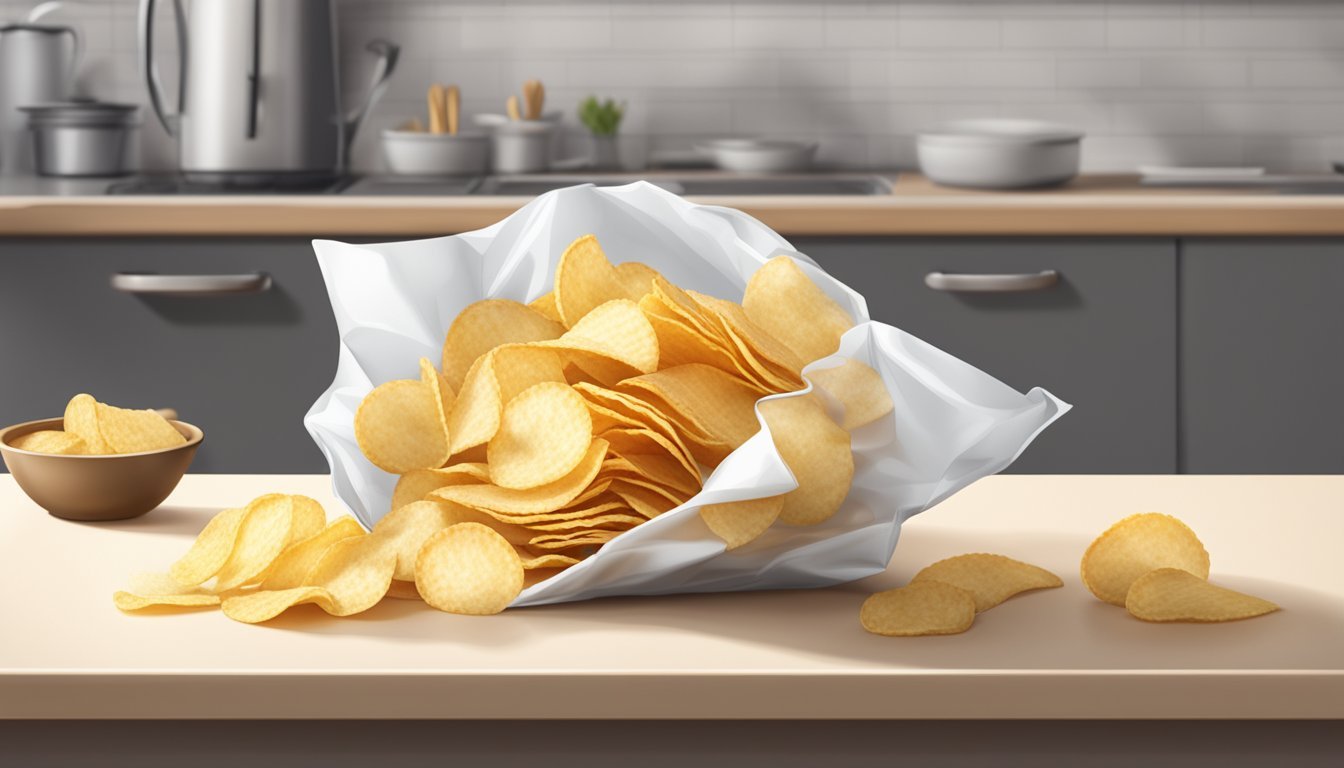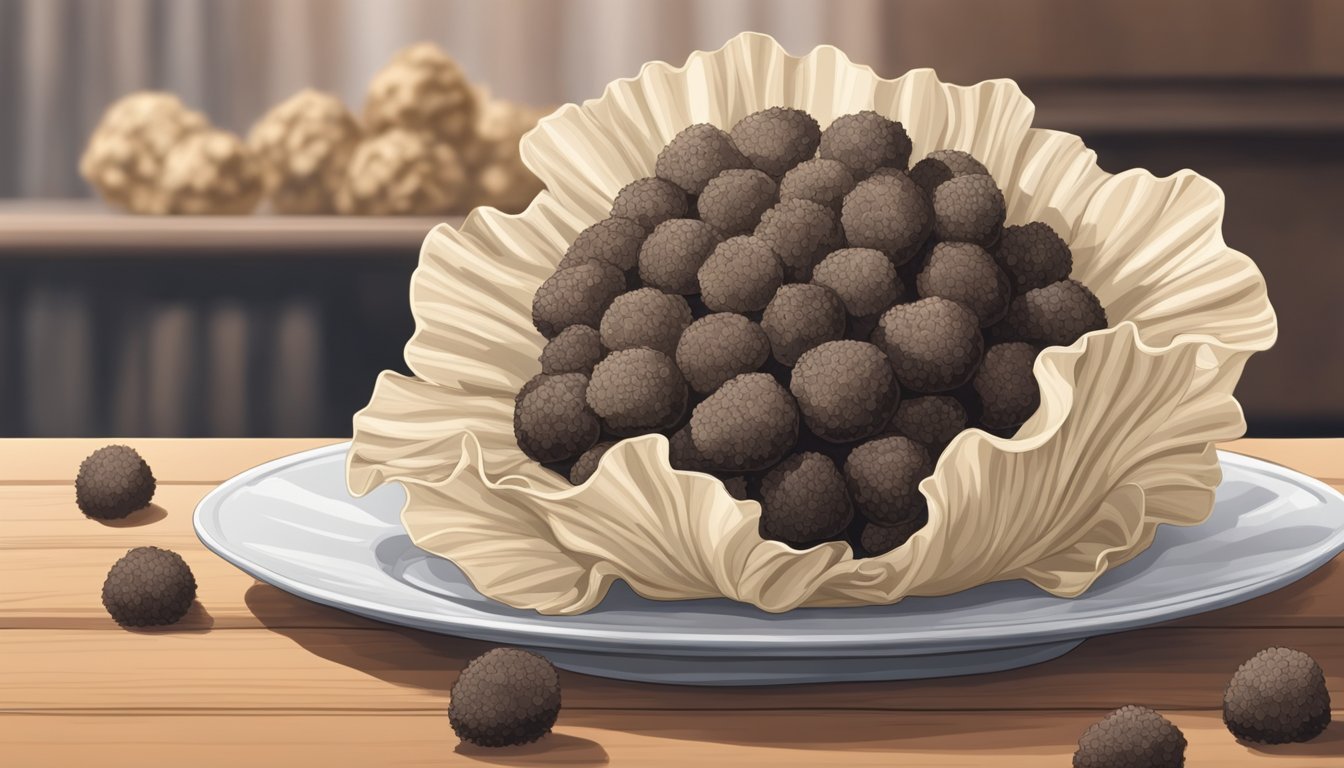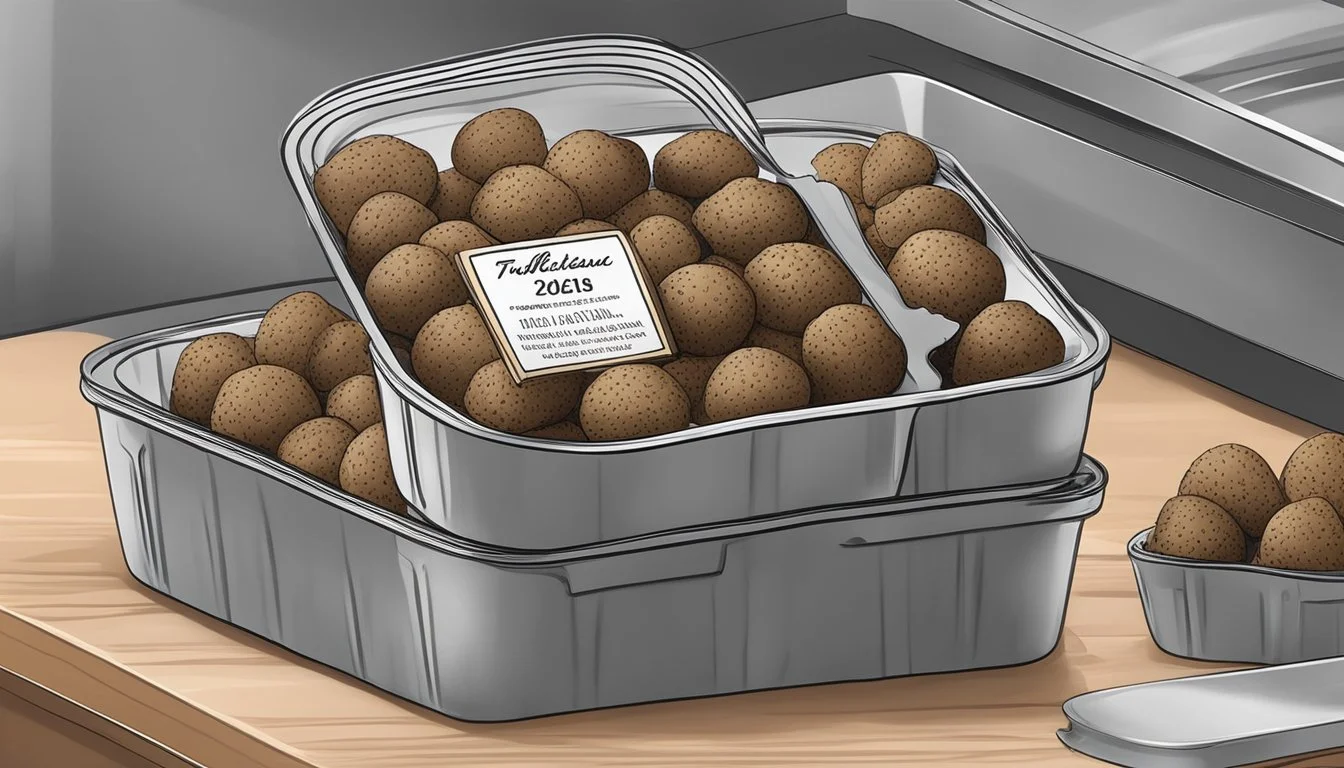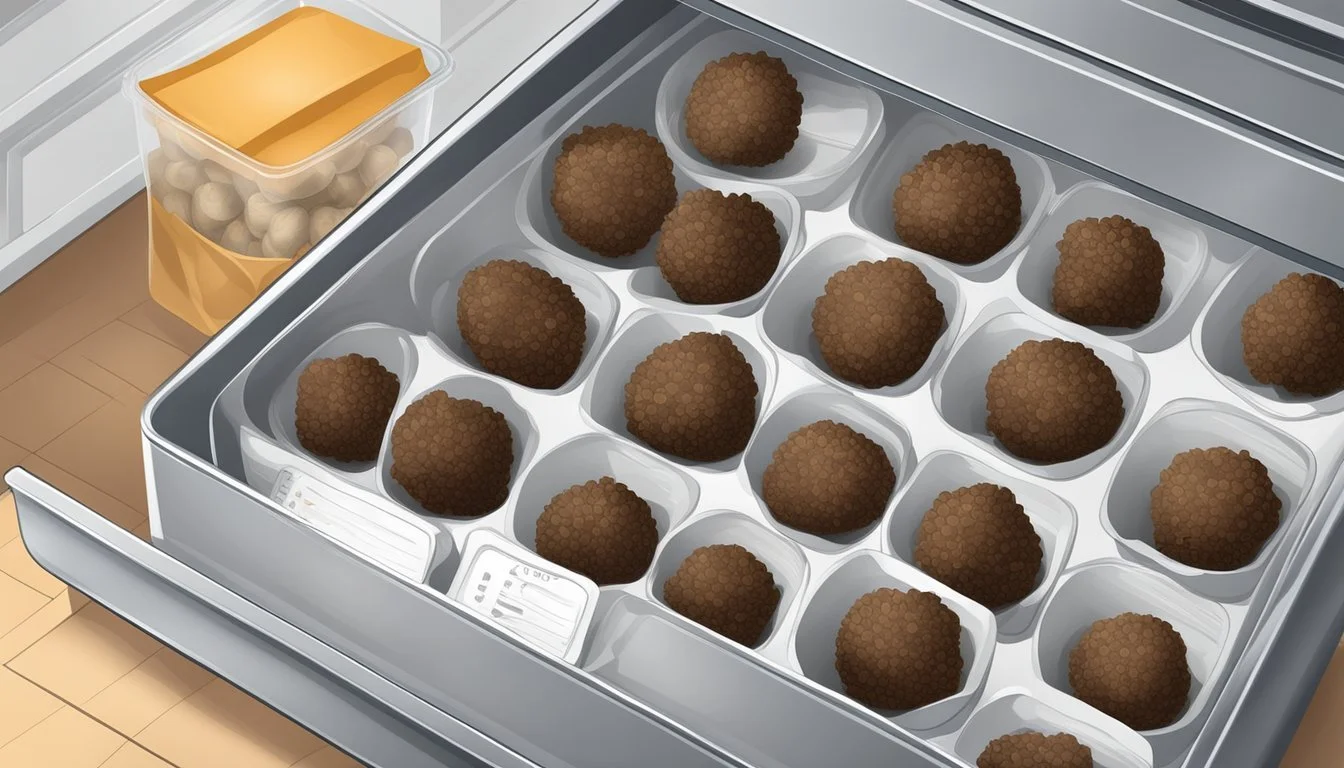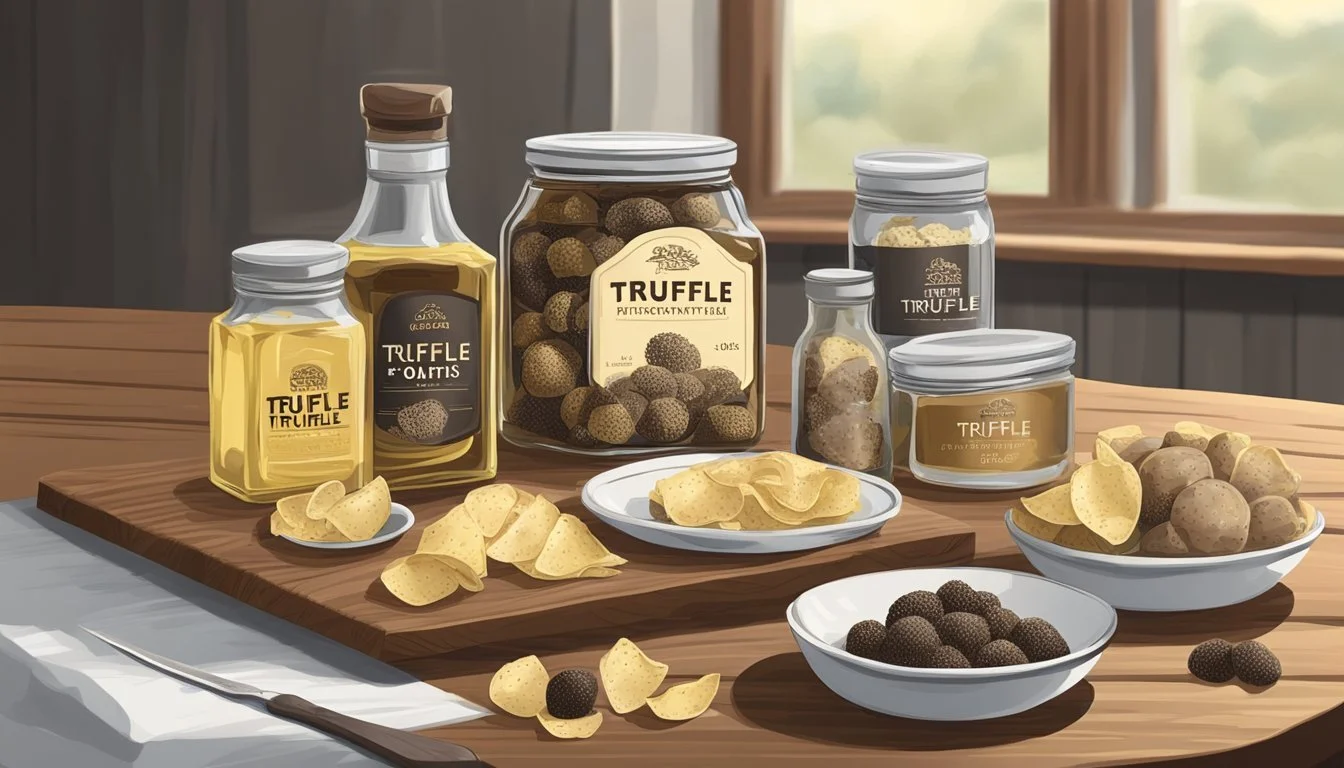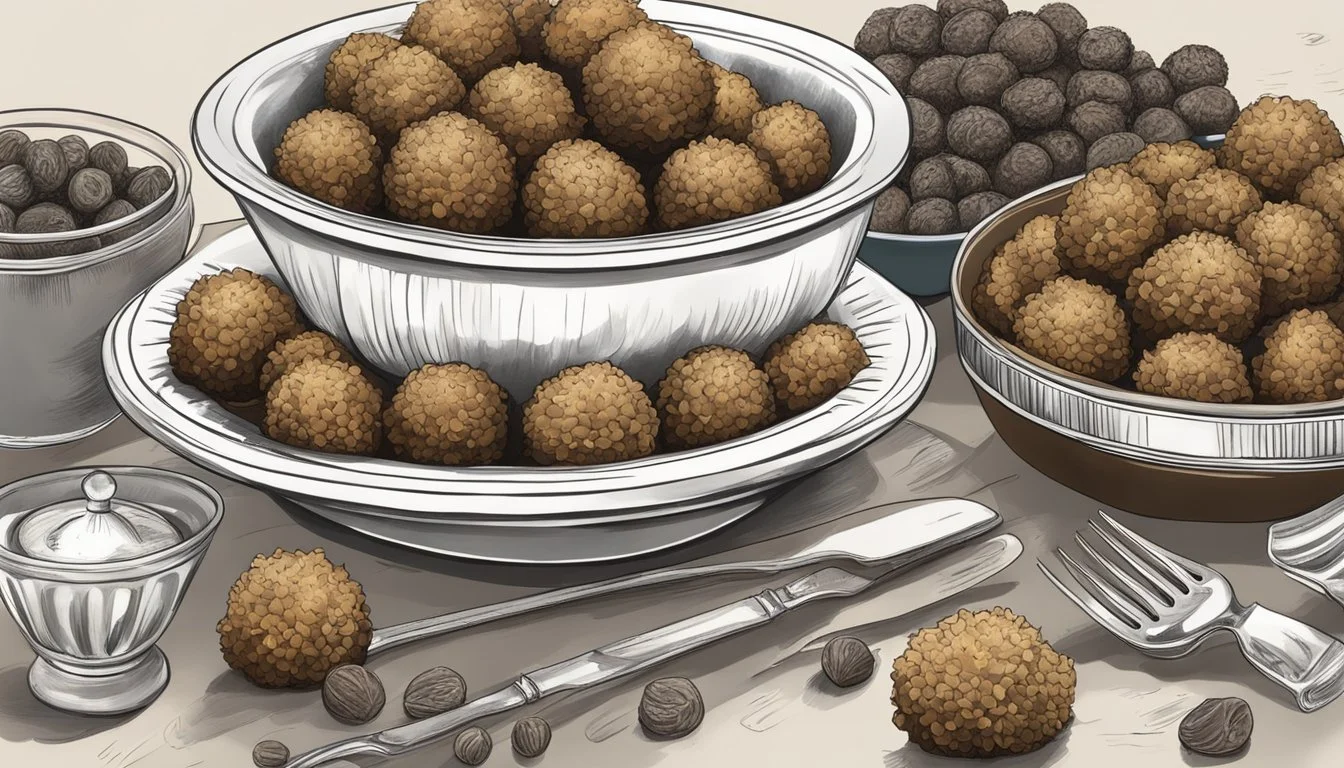How Long Do Ruffles Last?
Uncovering the Shelf Life of Your Favorite Chips
Truffles (What wine goes well with truffles?), a culinary delicacy often hailed as the diamonds of the kitchen, have a reputation for their distinctive and potent aroma which contributes to their unique flavor profile. The longevity of a truffle's flavor and aroma is a key factor in its culinary value, and understanding how to preserve this contributes significantly to the enjoyment of this prized ingredient. Fresh truffles are highly perishable and should be consumed quickly to maximize their taste and olfactory qualities.
The shelf life of a truffle varies depending on its type and the storage method used. Fresh truffles tend to last only a few days before their intense fragrance and flavor begin to diminish. Proper storage techniques can extend their life somewhat, but the window for enjoying truffles at their peak is relatively short. It's important for consumers and chefs to note that truffle-infused products such as oils or preserves will have a longer shelf life than fresh truffles.
Understanding Truffles
Truffles are a type of edible fungi highly valued for their distinctive flavor and aroma. Success in their cultivation and preservation directly impacts their culinary worth.
Types of Truffles
Truffles belong to the genus Tuber, and their value in cuisine is largely due to their aromatic properties. Two main types of truffles commonly dominate the culinary scene:
White Truffles: Often found in Europe, especially Italy.
Black Truffles: More widespread, found in Europe, North America, and other truffle-cultivating regions.
Truffle Varieties and Flavor Profiles
Each truffle variety has a distinct flavor profile, which varies by type:
White Truffles (Tuber magnatum): A delicate, nutty flavor, often described as earthy with hints of garlic and cheese.
Black Truffles (Tuber melanosporum): Possess a more robust flavor with chocolatey, earthy notes.
Harvesting and Production Factors
The harvesting and production of truffles are influenced by several factors that affect their availability and quality:
Harvest Season: White truffles are typically harvested in the fall, while black truffles can extend to early winter.
Climatic Conditions: A symbiotic relationship with certain trees and the right soil conditions are critical for truffle development.
Regional Variations: European truffles are often deemed superior due to established ecosystems and traditional harvesting methods.
Optimal Truffle Storage Methods
Proper storage is crucial for maintaining the quality of truffles. Whether storing truffles short-term or long-term, the right conditions include control over temperature, humidity, and choice of containers.
Short-Term Versus Long-Term Storage
For short-term storage of about 5 to 10 days, refrigeration is essential. Truffles should be stored in the fridge, ideally wrapped in absorbent paper that's changed daily to manage moisture. During long-term storage, lasting up to six months, freezing is the best option. However, care should be taken to prevent alterations in texture.
Appropriate Storage Containers
Truffles must be kept in an airtight container to protect them from other aromas and moisture. For fridge storage, containers such as glass jars or zip-lock bags work well. When freezing truffles, they should be tightly wrapped in plastic wrap or aluminum foil before placing in an airtight container.
Temperature and Humidity Considerations
Maintaining the right temperature and humidity is vital. The fridge temperature should be just above 0°C (32°F) for short-term storage. Humidity levels within the storage container should be kept low to avoid mold growth. For long-term storage in a freezer, the temperature should be at -18°C (0°F) or lower.
Preserving Truffle Quality and Freshness
When one acquires fresh truffles, it is imperative to store them properly as their quality, aroma, and freshness are fleeting. Preservation methods can prevent spoilage and extend the enjoyment of these delicacies.
Handling Fresh Truffles
The handling process begins the moment fresh truffles are acquired. They should be kept clean and dry to maintain their texture and prevent rot. One should inspect truffles for any signs of spoilage and discard any that are compromised. For short-term use, wrapping them individually in paper towels and placing them in airtight containers in the refrigerator is optimal.
Using Preservation Aids
For extending the life of fresh truffles beyond immediate consumption, certain aids can be utilized:
Refrigeration: Store in an airtight container with uncooked rice to absorb moisture.
Oil Preservation: Submerge in a jar with olive oil or a neutral oil, which can later be used to infuse dishes with truffle aroma.
Freezing: If one wants to preserve fresh truffles for several months, freezing is a viable option. However, this might slightly alter the texture.
Identifying Spoilage Signs
It's crucial to know when to discard a truffle. Signs of spoilage include:
Aroma: A noticeable lack of the characteristic truffle scent or an unpleasant odor.
Texture: Soft, mushy spots or visible mold.
Proper labeling and dating containers can help keep track of freshness and ensure truffles are used within their peak periods.
Maximizing Truffle Shelf Life
Maximizing the shelf life of truffles ensures that these prized ingredients can be enjoyed to their fullest potential. It can be extended through proper freezing techniques and refrigeration best practices.
Freezing Techniques
Freezing is a reliable method to prolong the lifespan of truffles beyond their typical expiration date. One should wrap truffles in plastic wrap or aluminum foil, subsequently placing them in a vacuum-sealed bag. This removes excess air and prevents freezer burn. Truffles can be stored in the freezer for up to six months, although texture changes should be expected after thawing.
Steps for Freezing Truffles:
Clean truffles gently and ensure they are dry.
Wrap tightly in plastic wrap or aluminum foil.
Place wrapped truffles in a vacuum-sealed bag, removing as much air as possible.
Label the bag with the current date before freezing.
Refrigeration Best Practices
Storing truffles in the refrigerator requires a careful approach to maintain their freshness. Truffles have a relative short shelf life of 5-10 days in refrigeration. They should be enveloped in a paper towel, which absorbs any excess moisture. This towel needs to be changed daily. The ideal storage temperature in the refrigerator should not drop below 40 degrees Fahrenheit to prevent spoilage.
Key Points for Refrigerator Storage:
Store in a cool, dry section of the refrigerator.
Encase truffles in a fresh paper towel, changing it daily.
Monitor refrigerator temperature to maintain it at or slightly above 40°F.
By following these strict freezing and refrigeration guidelines, the flavor and aroma of truffles can be preserved effectively, extending their culinary utility significantly.
Truffle-Infused Products
Truffle-infused products such as oils and butters (how long does butter last?) harness the distinctive aroma and flavor of truffles, extending their use past the brief shelf life of fresh truffles. These products should be stored properly to maintain their quality.
Truffle Oils and Butters
Truffle oils and butters are popular for adding a luxurious touch to dishes. Truffle oil typically refers to a base of olive oil or another carrier oil that is infused with the essence of truffle to capture its flavor. One needs to keep in mind that the quality and the shelf life of truffle oil can vary based on the type of oil used and the presence of actual truffle pieces. Generally, unopened truffle oil can last up to several months, and once opened, it's recommended to use it within a month to ensure the flavor remains potent.
As for truffle butter, it combines real truffles with butter, creating a product that can elevate even the simplest of dishes. To preserve truffle butter's aroma and taste, it should be stored in the refrigerator and ideally used within a few weeks of opening.
Extending Shelf Life of Truffle Products
To maximize the shelf life of truffle-infused products, it's important to adhere to proper storage methods.
Storage Location: Keep them in cool, dry places away from direct sunlight.
Temperature: For oils, room temperature is suitable, while butters should be refrigerated.
Containers: Ensure that containers are airtight to prevent oxidation, which can diminish the truffle aroma.
By following these guidelines, one can maintain the integrity of truffle-infused oils and butters, ensuring that their unique flavor remains as intended for future culinary use.
Cooking with Truffles
Truffles, an esteemed produce, are fungi that elevate culinary creations with their intense aroma and flavor. They can be incorporated into a wide range of recipes, providing a luxurious touch to even the simplest dishes.
Incorporating Truffles into Recipes
For those looking to infuse their meals with the distinctive taste of truffles, it's essential to understand the potency of this ingredient. Truffles should be used sparingly to avoid overpowering the dish. Here are a few methods for adding truffles to recipes:
Shaving: Thin slices of truffle can be added to hot dishes like risottos or pastas, which allows the heat to release the truffle's aroma.
Infusions: Truffle oil, typically olive oil infused with truffles, may be drizzled over prepared dishes right before serving.
Incorporation: Small pieces or truffle shavings can be blended into sauces or butter, creating a base that can be used in a variety of recipes.
Truffle-Enhanced Dishes and Ingredients
Truffles pair exceptionally well with ingredients that have a neutral flavor profile, as they absorb the truffles' distinctive taste. Here are specific ways to highlight truffles in various dishes:
Eggs: Simple dishes like scrambled eggs or omelets become gourmet when topped with truffle shavings.
Soup: Cream-based soups gain an elegant twist with a dollop of truffle-infused cream.
Sauce: Enhance a basic cream or wine sauce with minced truffles for a rich, decadent flavor.
Baked Goods: Incorporate truffle salt in lieu of regular salt to add depth to breads or savory pastries.
Ingredient Suggested Truffle Pairing Pasta Fresh truffle shavings, truffle oil, or truffle butter Risotto Truffle-infused cheese, truffle shavings Potatoes Truffle salt, truffle-infused sour cream Beef and Poultry Truffle butter for cooking, truffle oil as a finishing touch
The inclusion of produce like onions and garlic should be balanced to complement rather than compete with the truffles. The key to successful truffle dishes is allowing the truffle's unique flavor to stand out without excess calories or complexity in the recipe.
Truffle Complementary Ingredients
When incorporating truffles into a dish, selecting the right ingredients enhances their unique flavor. It's crucial to pair them thoughtfully with accompaniments that allow the truffles' aroma and taste to shine rather than overpower them.
Selecting Accompanying Produce and Proteins
For a harmonious dish, chefs often opt for neutral bases like rice or mild proteins that complement both white and black truffles without competing for the palate's attention. Fresh pasta (how long does fresh pasta last?) or risotto serves as an ideal canvas for shaving truffles on top. Mushrooms can intensify the earthiness of truffles, while a drizzle of high-quality olive oil helps to carry the flavor throughout the dish.
Proteins Produce Chicken, particularly breast Arugula Veal, as scallopini Asparagus Eggs, in a simple omelette Jerusalem artichoke
Truffles also harmonize with nuts such as pine nuts or hazelnuts, which can be used to add texture to truffle-infused dishes without overpowering the truffle's delicate flavor profile.
Pairing with Wines and Cheeses
A successful truffle experience often involves the right wine and cheese companions. For white truffles, lighter white wines or those with a hint of earthiness like aged Chardonnay or a Piedmontese Barolo are recommended.
White Truffles Black Truffles Aged Chardonnay Bold Red Wines Piedmontese Barolo Nebbiolo Sparkling Wines Full-Bodied Merlot
Black truffles, on the other hand, can stand up to bolder red wines. Their robust nature complements the depth of flavors found in a Nebbiolo or a full-bodied Merlot. With cheeses, subtlety is key; opt for milder, creamy cheeses like Brie or Camembert, which can be adorned with thin truffle slices to elevate the cheese without overwhelming it.
Chocolate Truffles
Chocolate truffles are a luxurious confectionery delight, commonly made with a ganache center and coated in chocolate, cocoa powder, or nuts.
Creating Homemade Chocolate Truffles
Homemade chocolate truffles begin with a ganache, a creamy blend of chocolate and heavy cream. The process involves heating the cream and pouring it over finely chopped chocolate, allowing the heat to melt the chocolate—dark, milk, or white---before stirring to create a smooth mixture. After the ganache has set, it's shaped into balls and often rolled in cocoa powder or other coatings. The method is straightforward and can be done without special equipment, although some home chefs might use a microwave to gently heat the cream.
Ingredients:
Chocolate (dark, milk, or white)
Heavy cream
Optional coatings (cocoa powder, nuts, etc.)
Tools:
Heat-proof bowl
Spoon or spatula
Baking sheet
Fork or dipping tool
Preserving and Storing Chocolate Truffles
To ensure the longevity of chocolate truffles, storing them properly is crucial. At room temperature, in a cool and dry place, truffles can last for approximately 2 weeks. For extended preservation, placing them in the refrigerator can keep them fresh for up to 4 weeks, while the freezer can extend their shelf life up to 3 months. Wrapping them tightly in plastic wrap or an airtight container is important to prevent freezer burn or absorption of other flavors and odors.
Room Temperature Storage:
Cool, dry place
Lasts up to 2 weeks
Refrigerator Storage:
Airtight container
Lasts up to 4 weeks
Freezer Storage:
Tightly wrapped
Lasts up to 3 months

